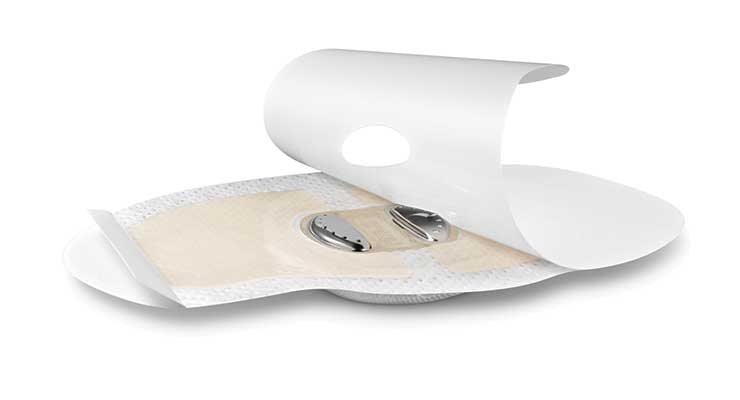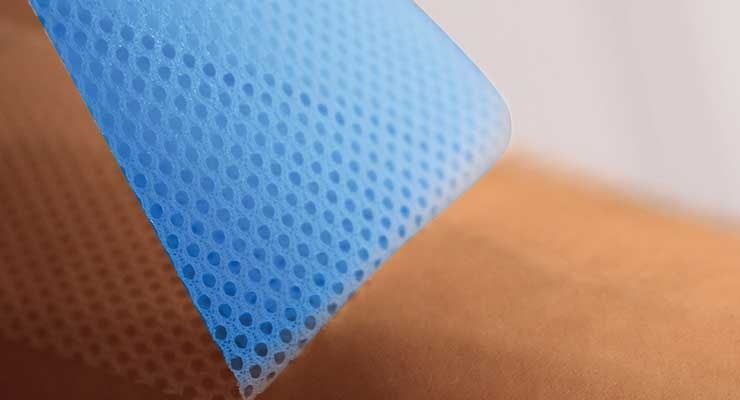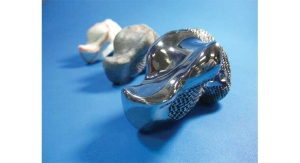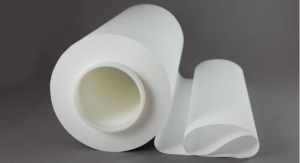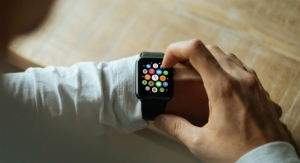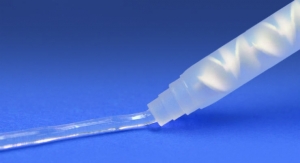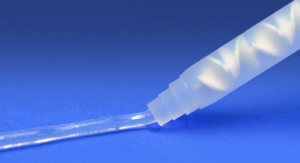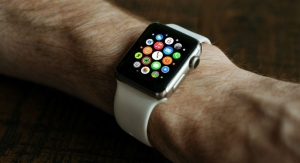Sam Brusco, Associate Editor03.07.19
Changing bandages covering a large wound or burn is never a pleasant experience. If there’s any sort of adhesive involved, and depending on the location of the injury, chances are some hairs will be ripped out. Almost always, a thin film of adhesive will be left behind. There’s a reason “rip the Band-Aid off” has become a popular colloquialism—when something painful must be done, it’s better to experience the pain all at once rather than slowly peeling it away.
Scientists from the National University of Science and Technology (NUST)—MISIS, Central European Institute of Technology, and a number of other universities recently developed a biocompatible material with antibacterial properties to drastically change the process of bandaging a wound. The biocompatible dressing material acts locally on the focus on inflammation, and doesn’t require changing—especially important to prevent the risk of infection. Traditional bandages reopen the possibility of infection once they are removed to reapply an antibiotic, or simply during replacement. After releasing the antibiotic incorporated into the material, the bandages will gradually dissolve on the skin. If necessary, a new bandage can be placed directly on top of the old one.
“As a basis for our material, we used polycaprolactone nanofibers, which are self-dissolvable,” commented Elizaveta Permyakova, one of the authors of this study (which was published last September in the journal Materials and Design) and researcher at NUST MISIS. “We attached gentamicin, a broad-spectrum antibiotic, to the fibers. Interestingly, the effect has turned out to be prolonged: we observed a significant decrease in the number of bacteria even 48 hours after the application of the material. Usually surfaces with antibacterial effect work only during the first day, often even the first hours of application.”
The scientists plan to continue to test and improve the material. They will soon attach new generation antibiotics like ciprofloxacin—which most species of bacteria have not yet developed a resistance to. There are also plans to create multi-layer samples of the material: antibiotic, heparin to reduce blood clotting at the surface, and another layer of antibiotic. The NUST MISIS scientists also noted the material’s use isn’t limited to skin treatment—it can also be used to treat inflammatory bone diseases like osteoporosis and osteomyelitis.
Material properties are quite literally the building blocks for medical devices to achieve effective clinical outcomes. And material science is continuing to quickly evolve to match the demands of new technologies and manufacturing methods like additive and hybrid manufacturing. Injection molding can now handle a wider range of polymers for important product applications. New and enhanced materials allow more creative options and higher functionality for medical device designs, ultimately bringing about improved patient outcomes. Embedded electronics and the rise of digital patient care are also driving medical material advancement.
Despite all of these exciting advances, however, medical device OEMs can be conservative when it comes to choosing their materials. Adoption of new materials typically only occurs when a design necessitates a certain functional feature that existing materials are unable to provide. There is significant risk, effort, and cost associated with validating new materials as well. But more recently, this resistance is beginning to fade because OEMs are realizing they must embrace new materials to remain on the forefront of technology.
“Material trends tend to be market or application driven,” said Krissy Dempsey, medical components molding manager at Saint-Gobain Life Sciences, a division of Saint-Gobain Performance Plastics, a Solon, Ohio-based producer of engineered, high-performance polymer products. “However, in general, we are seeing customers excited about materials that allow converters to hold tighter tolerances. The materials may have specific characteristics that allow better management and control from a processing standpoint. We’ve also seen a trend toward lower coefficient of friction materials. The growing demand for self-bond materials has been driving suppliers to continue to develop new offerings. Other exciting materials for medical devices are self-lubricating silicones, low coefficient of friction silicones, and anti-microbial silicones.”
Medical device manufacturers must keep pace with material science as the demand increases for smaller, more complex, and more functional technologies with specifically engineered material properties. Using advanced materials to manufacture a product help to meet the end-user’s demand for improved patient benefits, safety, and cost controls. Biocompatibility, resistance to sterilization and decontamination, mechanical property longevity, and color variation for color coding are also considerations OEMs must make. Matching the right material to the right device is a significant step in the product development and commercialization process.
“As OEMs seek solutions for improved patient outcomes and regulatory bodies work to ensure patient safety, suppliers must have a deeper understanding of fundamental materials characteristics and performance,” advised Julie Cameron, vice president of marketing and business development at Carpinteria, Calif.-based NuSil Technology, part of Avantor. NuSil is a manufacturer of medical and space-grade silicones. “More sophisticated testing is required to understand and predict material performance in device fabrication processes. This demands deeper understanding of material design and structure-property relationships to deliver materials that, in turn, yield desired device performance.”
The relationship between materials science and medical device development can be viewed as a two-way street. Unmet clinical needs and device innovation drives new material development, because a specific application or technology may require a new material with specific physical characteristics. However, the inverse is also true—advancement in materials science also innovates medical device development. Most material suppliers will partner with a device manufacturer to develop or modify an existing material chemistry if an off-the-shelf formulation doesn’t fulfill design requirements. Partnering in this way stimulates innovation to occur on both sides of the partnership.
“In addition, there is innovation drawing on the physical properties of materials, such as the elution properties of materials to deliver active pharmaceutical ingredients, and now using the electrical properties of materials in diagnostics and monitoring applications,” Cameron continued. “These needs are being met with both legacy and novel processing methods.”
Hospitals, doctor’s offices, and other healthcare providers don’t just use duct tape for bandages, wound care, or device fixation. There are a number of reasons for this, but the most apparent is that sticking it to skin and then peeling it off isn’t viable. Duct tape doesn’t use a medical grade pressure-sensitive adhesive (PSA) material. Medical adhesive materials must be skin-friendly, not allow for device migration, and have a variable degree of initial tack and peel adhesion. Medical adhesives must also be easy to remove, durable, and breathable to ensure patient comfort. PSA materials vary among features like peel adhesion, breathability, ability to be repositioned, initial tack, and trauma to the skin upon removal.
Acrylic can be formulated to have high or low tack as well as high or low peel adhesion values. It is quite breathable, which enhances its repositionability. Soft silicone gel is also repositionable and causes low skin trauma upon removal, with good initial tack and only a small change in peel adhesion over time. Hydrogel exhibits high initial tack and low peel adhesion, but causes no trauma to skin during removal because it can hold moisture. Hydrocolloid also causes no trauma to skin upon removal, and also has “wet tack” so it can adhere to moist skin. Each adhesive has benefits useful to a range of medical applications, including advanced wound care, scar therapy, transdermal drug delivery, consumer healthcare (i.e., wearable devices), ostomy care, diagnostics, and surgery.
“Healthcare paradigms continue to evolve in transformative ways, and materials must keep pace with that evolution,” explained Deepak Prakash, senior director of global marketing for Vancive Medical Technologies, an Avery Dennison business. Based in Chicago, Ill., Vancive offers a large portfolio of pressure-sensitive adhesive products including single-coated, double-coated, self-wound, drape, and transfer tapes for a variety of medical applications including surgical, ostomy, diagnostics, patient monitoring, wound care, and medical wearables. “For example, as more healthcare is delivered remotely, patients may have more time between hospital or office visits. In sync with this trend, PSA materials may need to keep medical devices in service for longer periods of time. Whether the end product is a wound dressing or wearable vital signs monitor, materials will play an important role in improving outcomes and maintaining patient comfort and compliance.”
Infections arising as a result of hospital treatment (hospital-acquired infections, or HAIs) are a major threat for patients, especially since a significant number of them are gaining resistance against antibiotics. The issue of biofilm formation mainly affects medical devices and products used in patients’ bodies, like drainage tubes and central venous catheters. However, biofilm formation can also affect medical diagnostic and analytical equipment. To prevent biofilm formation, microbes must not be allowed to settle on device surfaces. Therefore, device makers are developing antimicrobial properties into their technologies, whether by adding antibiotics to the material, or applying antimicrobial coatings.
The increased attention on HAIs also necessitates reusable devices composed of high-strength materials that are able to withstand repeat sterilization, high temperatures, and strong cleaners.
“Medical device designers are calling for stiffer, stronger, non-metal high-performance materials that are easy to process and maintain their geometries during secondary operations,” noted Jeff Hrivnak, Ph.D., global business manager—healthcare at Solvay Specialty Polymers, an Alpharetta, Ga.-based provider of high-quality polymers for a variety of manufacturing industries. “Because of the rise in HAIs, they also want materials with anti-microbial properties, or advanced polymers that can withstand repeated sterilizations with faster cycle times and offer resistance to high temperatures and harsh chemicals.”
At the same time device makers look to robust materials that can stand up to repeat sterilizations and potentially harsh conditions, they want their products to be smaller, lighter weight, and prettier. The challenge for medical device material providers then becomes working with the manufacturer to select a material or materials that are simultaneously strong, lightweight, and will make the device look pleasing to the eye.
“Lighter-weight materials for medical devices are also increasing in demand,” Hrivnak continued. “From a marketing standpoint, original equipment manufacturers (OEMs) want materials that are aesthetically-pleasing and can support product branding with multiple colors and customized designs.”
Silicone materials also continue to be popular for medical device applications thanks to biocompatibility, strong chemical structure, bacterial resistance, and long shelf life, among many other benefits. Medical applications for silicones range from wound care gels to flexible drainage tubes to semi-rigid implants, and demand for silicone in medical devices continues to increase over the years. Delivery devices in hospitals and labs are made of silicone. Face masks for sleep apnea and other respiratory applications are molded from silicone as well.
“One of the earliest examples of the use of silicones in a life-saving medical device was in the development of the hydrocephalus shunt,” recounted James M. Lambert, Ph.D, vice president, technology for NuSil. “Silicone was the only elastomer available at the time able to withstand sterilization without shrinking, deforming, or becoming brittle. As technologies advance, we anticipate new device performance demands will emerge that will be just as crucial to realizing the desired benefits and silicones, and the flexibility of its chemistry will continue to enable new solutions.”
Silicone’s increasing popularity in medical products is also due to its ability to be formulated to reach specific performance, aesthetic or therapeutic properties. Designers, engineers, and inventors have many silicone material choices available today. Many medical grade silicones have been formulated by silicone manufacturers to meet specific medical device demands and requirements.
Medical grade silicones also have implantable formulations. The most advanced, costly medical silicone grade available is the unrestricted grade for implantation, and can be implanted into the body for beyond the 29 days allowed for restricted formulations. Silicone suppliers have a battery of medical grade materials—if a project requires a material with special additives or characteristics, material suppliers will work with a device maker to create custom batches.
“We are very excited about the new materials we’ve commercialized and have in development,” commented Bob Waitt, global market manager, healthcare, at Elkem Silicones USA Corp., an East Brunswick, N.J.-based global integrated silicone manufacturer. “We recently launched Silbione Biomedical ADH1 M200, a one-component tin-free implantable adhesive, that has been very well received by the market. Designers are using it to adhere multiple materials for the assembly of devices much more consistently and efficiently than they had been able to in the past. We also have a two-component platinum-cure adhesive coming out soon that has excellent adhesion characteristics to multiple substrate materials. We are also working on 3D printable materials and other novel implantable and drug delivery-grade materials.”
However, these novel materials are subject to stringent regulations in order to be permitted to create a component or device. In particular, Europe’s new Medical Devices Regulation (MDR), the stricter successor to the famously “soft-touch” Medical Device Directive, as well as revisions to ISO 10993-18 (the international standard concerning the chemical characterization of materials) are ushering in regulatory change to the medical technology community.
In order to be compliant with complex device design requirements like the EU’s MDR, OEMs might select specific materials that enhance a device’s biological safety. Matching this, resin manufacturers would then invest time and resources in replacing materials on the restricted substance list—those containing DEHP or heavy metals, for example—with alternatives that meet current regulations.
ISO 10993-18’s latest draft, according to the ISO website, describes a framework for identification of the material and identification and qualification of its chemical constituents. It is meant to assist material suppliers and medical device manufacturers when conducting a biological safety assessment. According to the standard, device manufacturers should collect qualitative and quantitative compositional information about the material from its supplier. Further, qualitative information about additional processing additives should be gathered from the appropriate members of the supply chain. All of this will significantly boost the need for transparency, as well as vendor information protection and management.
“Material compliance has increased with different global requirements,” noted John Tranquilli, materials manager of Apple Rubber, a Lancaster, N.Y.-based designer and manufacturer of seals and sealing devices for the medical device, pharmaceutical, automotive, and aerospace industries. “EU, FDA, and China require new compliance standards for medical materials. Restrictive substances test whether materials can conform to these new standards. Polycyclic Aromatic Hydrocarbon (PAH) restrictions limit the use of carbon black and extender oils in rubber compounds. D4, D5, D6 (Cyclo Siloxane) restrictions can affect the use of silicone rubber in medical devices. New chemicals are being restricted each year, which may require changes to the old compounds in current medical devices. This will lead to the need for new qualifications. Adding these regulations on a part print does not always make a part compliant, unless the OEM is willing to accept compound changes.”
OEMs are constantly aiming to produce devices that deliver improved and more reliable outcomes to patients, all while focusing on driving down costs wherever they are able. Materials-related strategies often occur very early on in this process. Selecting the materials that exhibit the precise properties required for an application while also remaining cost-effective is critical to their success. Materials have an impact on device performance and cost due to their ease of use, longevity, durability, and regulatory acceptance. Therefore, choosing an experienced, knowledgeable materials supplier willing to closely collaborate on material selection is an especially important decision in the critical early stages of development.
“In many cases, we work closely with our customers to determine where their challenges lie in device design and performance,” explained Jack Chan, global marketing director of medical at Porex, a Fairburn, Ga.-based designer and manufacturer of porous materials solutions for the healthcare, consumer, and industrial industries. “Typically, functional issues are at the root of poor performance. By first identifying what function (whether venting, filtering, diffusing, wicking, absorbing, or applying) is impacting device operation, we are able to engineer a customized porous solution that helps our customers address everything from design issues to assembly concerns to patient outcome. Our material expertise enables us to construct porous components with precise densities, shapes, pore size, pore volume, and pore structures to achieve physical properties such as airflow, high bacterial filtration efficiency, and water entry pressure.”
Arguably the most important factor in material selection is intended use. Prior to even designing the medical device, manufacturers and designers must understand how the product will be used in the market. Surgical instruments, after all, require much different materials than implants. Instruments must be strong, durable, user-friendly, and withstand harsh sterilization and cleaning methods. Implants, on the other hand, must be resistant to chemicals, biocompatible, and—depending on the specific application—flexible.
“A material supplier should focus on understanding the OEM’s end goal for the medical device,” advised Prakash. “Does the material need to be transparent? How long will the device be worn? Under what conditions and activity level? Will most patients have fragile skin? Early conversations also should cover manufacturing methods the OEM has planned for the device, from start to finish, including sterilization. Then the material supplier can start to determine how to best assist the OEM toward meeting its objectives and assess required trade-offs. Are there lighter-weight or lower-cost materials that potentially could function the same as or better than those the designer originally had in mind? Does the product require a custom formulated adhesive to deliver the desired performance? These are all important factors for suppliers and device OEMs to discuss to ensure selection of the most appropriate materials.”
“We follow a well-defined process,” described Hrivnak. “We ask about environmental exposure, manufacturing method, secondary operations, and sterilization techniques. We also discuss the design, biocompatibility, usability, and whether there’s integration with metal components. Material cost is obviously a key consideration, but OEMs also need to consider total cost of ownership. A single-use medical instrument, for example, can support greater utilization of assets like operating rooms.”
Scientists from the National University of Science and Technology (NUST)—MISIS, Central European Institute of Technology, and a number of other universities recently developed a biocompatible material with antibacterial properties to drastically change the process of bandaging a wound. The biocompatible dressing material acts locally on the focus on inflammation, and doesn’t require changing—especially important to prevent the risk of infection. Traditional bandages reopen the possibility of infection once they are removed to reapply an antibiotic, or simply during replacement. After releasing the antibiotic incorporated into the material, the bandages will gradually dissolve on the skin. If necessary, a new bandage can be placed directly on top of the old one.
“As a basis for our material, we used polycaprolactone nanofibers, which are self-dissolvable,” commented Elizaveta Permyakova, one of the authors of this study (which was published last September in the journal Materials and Design) and researcher at NUST MISIS. “We attached gentamicin, a broad-spectrum antibiotic, to the fibers. Interestingly, the effect has turned out to be prolonged: we observed a significant decrease in the number of bacteria even 48 hours after the application of the material. Usually surfaces with antibacterial effect work only during the first day, often even the first hours of application.”
The scientists plan to continue to test and improve the material. They will soon attach new generation antibiotics like ciprofloxacin—which most species of bacteria have not yet developed a resistance to. There are also plans to create multi-layer samples of the material: antibiotic, heparin to reduce blood clotting at the surface, and another layer of antibiotic. The NUST MISIS scientists also noted the material’s use isn’t limited to skin treatment—it can also be used to treat inflammatory bone diseases like osteoporosis and osteomyelitis.
Material properties are quite literally the building blocks for medical devices to achieve effective clinical outcomes. And material science is continuing to quickly evolve to match the demands of new technologies and manufacturing methods like additive and hybrid manufacturing. Injection molding can now handle a wider range of polymers for important product applications. New and enhanced materials allow more creative options and higher functionality for medical device designs, ultimately bringing about improved patient outcomes. Embedded electronics and the rise of digital patient care are also driving medical material advancement.
Despite all of these exciting advances, however, medical device OEMs can be conservative when it comes to choosing their materials. Adoption of new materials typically only occurs when a design necessitates a certain functional feature that existing materials are unable to provide. There is significant risk, effort, and cost associated with validating new materials as well. But more recently, this resistance is beginning to fade because OEMs are realizing they must embrace new materials to remain on the forefront of technology.
“Material trends tend to be market or application driven,” said Krissy Dempsey, medical components molding manager at Saint-Gobain Life Sciences, a division of Saint-Gobain Performance Plastics, a Solon, Ohio-based producer of engineered, high-performance polymer products. “However, in general, we are seeing customers excited about materials that allow converters to hold tighter tolerances. The materials may have specific characteristics that allow better management and control from a processing standpoint. We’ve also seen a trend toward lower coefficient of friction materials. The growing demand for self-bond materials has been driving suppliers to continue to develop new offerings. Other exciting materials for medical devices are self-lubricating silicones, low coefficient of friction silicones, and anti-microbial silicones.”
Medical device manufacturers must keep pace with material science as the demand increases for smaller, more complex, and more functional technologies with specifically engineered material properties. Using advanced materials to manufacture a product help to meet the end-user’s demand for improved patient benefits, safety, and cost controls. Biocompatibility, resistance to sterilization and decontamination, mechanical property longevity, and color variation for color coding are also considerations OEMs must make. Matching the right material to the right device is a significant step in the product development and commercialization process.
“As OEMs seek solutions for improved patient outcomes and regulatory bodies work to ensure patient safety, suppliers must have a deeper understanding of fundamental materials characteristics and performance,” advised Julie Cameron, vice president of marketing and business development at Carpinteria, Calif.-based NuSil Technology, part of Avantor. NuSil is a manufacturer of medical and space-grade silicones. “More sophisticated testing is required to understand and predict material performance in device fabrication processes. This demands deeper understanding of material design and structure-property relationships to deliver materials that, in turn, yield desired device performance.”
The relationship between materials science and medical device development can be viewed as a two-way street. Unmet clinical needs and device innovation drives new material development, because a specific application or technology may require a new material with specific physical characteristics. However, the inverse is also true—advancement in materials science also innovates medical device development. Most material suppliers will partner with a device manufacturer to develop or modify an existing material chemistry if an off-the-shelf formulation doesn’t fulfill design requirements. Partnering in this way stimulates innovation to occur on both sides of the partnership.
“In addition, there is innovation drawing on the physical properties of materials, such as the elution properties of materials to deliver active pharmaceutical ingredients, and now using the electrical properties of materials in diagnostics and monitoring applications,” Cameron continued. “These needs are being met with both legacy and novel processing methods.”
Hospitals, doctor’s offices, and other healthcare providers don’t just use duct tape for bandages, wound care, or device fixation. There are a number of reasons for this, but the most apparent is that sticking it to skin and then peeling it off isn’t viable. Duct tape doesn’t use a medical grade pressure-sensitive adhesive (PSA) material. Medical adhesive materials must be skin-friendly, not allow for device migration, and have a variable degree of initial tack and peel adhesion. Medical adhesives must also be easy to remove, durable, and breathable to ensure patient comfort. PSA materials vary among features like peel adhesion, breathability, ability to be repositioned, initial tack, and trauma to the skin upon removal.
Acrylic can be formulated to have high or low tack as well as high or low peel adhesion values. It is quite breathable, which enhances its repositionability. Soft silicone gel is also repositionable and causes low skin trauma upon removal, with good initial tack and only a small change in peel adhesion over time. Hydrogel exhibits high initial tack and low peel adhesion, but causes no trauma to skin during removal because it can hold moisture. Hydrocolloid also causes no trauma to skin upon removal, and also has “wet tack” so it can adhere to moist skin. Each adhesive has benefits useful to a range of medical applications, including advanced wound care, scar therapy, transdermal drug delivery, consumer healthcare (i.e., wearable devices), ostomy care, diagnostics, and surgery.
“Healthcare paradigms continue to evolve in transformative ways, and materials must keep pace with that evolution,” explained Deepak Prakash, senior director of global marketing for Vancive Medical Technologies, an Avery Dennison business. Based in Chicago, Ill., Vancive offers a large portfolio of pressure-sensitive adhesive products including single-coated, double-coated, self-wound, drape, and transfer tapes for a variety of medical applications including surgical, ostomy, diagnostics, patient monitoring, wound care, and medical wearables. “For example, as more healthcare is delivered remotely, patients may have more time between hospital or office visits. In sync with this trend, PSA materials may need to keep medical devices in service for longer periods of time. Whether the end product is a wound dressing or wearable vital signs monitor, materials will play an important role in improving outcomes and maintaining patient comfort and compliance.”
Infections arising as a result of hospital treatment (hospital-acquired infections, or HAIs) are a major threat for patients, especially since a significant number of them are gaining resistance against antibiotics. The issue of biofilm formation mainly affects medical devices and products used in patients’ bodies, like drainage tubes and central venous catheters. However, biofilm formation can also affect medical diagnostic and analytical equipment. To prevent biofilm formation, microbes must not be allowed to settle on device surfaces. Therefore, device makers are developing antimicrobial properties into their technologies, whether by adding antibiotics to the material, or applying antimicrobial coatings.
The increased attention on HAIs also necessitates reusable devices composed of high-strength materials that are able to withstand repeat sterilization, high temperatures, and strong cleaners.
“Medical device designers are calling for stiffer, stronger, non-metal high-performance materials that are easy to process and maintain their geometries during secondary operations,” noted Jeff Hrivnak, Ph.D., global business manager—healthcare at Solvay Specialty Polymers, an Alpharetta, Ga.-based provider of high-quality polymers for a variety of manufacturing industries. “Because of the rise in HAIs, they also want materials with anti-microbial properties, or advanced polymers that can withstand repeated sterilizations with faster cycle times and offer resistance to high temperatures and harsh chemicals.”
At the same time device makers look to robust materials that can stand up to repeat sterilizations and potentially harsh conditions, they want their products to be smaller, lighter weight, and prettier. The challenge for medical device material providers then becomes working with the manufacturer to select a material or materials that are simultaneously strong, lightweight, and will make the device look pleasing to the eye.
“Lighter-weight materials for medical devices are also increasing in demand,” Hrivnak continued. “From a marketing standpoint, original equipment manufacturers (OEMs) want materials that are aesthetically-pleasing and can support product branding with multiple colors and customized designs.”
Silicone materials also continue to be popular for medical device applications thanks to biocompatibility, strong chemical structure, bacterial resistance, and long shelf life, among many other benefits. Medical applications for silicones range from wound care gels to flexible drainage tubes to semi-rigid implants, and demand for silicone in medical devices continues to increase over the years. Delivery devices in hospitals and labs are made of silicone. Face masks for sleep apnea and other respiratory applications are molded from silicone as well.
“One of the earliest examples of the use of silicones in a life-saving medical device was in the development of the hydrocephalus shunt,” recounted James M. Lambert, Ph.D, vice president, technology for NuSil. “Silicone was the only elastomer available at the time able to withstand sterilization without shrinking, deforming, or becoming brittle. As technologies advance, we anticipate new device performance demands will emerge that will be just as crucial to realizing the desired benefits and silicones, and the flexibility of its chemistry will continue to enable new solutions.”
Silicone’s increasing popularity in medical products is also due to its ability to be formulated to reach specific performance, aesthetic or therapeutic properties. Designers, engineers, and inventors have many silicone material choices available today. Many medical grade silicones have been formulated by silicone manufacturers to meet specific medical device demands and requirements.
Medical grade silicones also have implantable formulations. The most advanced, costly medical silicone grade available is the unrestricted grade for implantation, and can be implanted into the body for beyond the 29 days allowed for restricted formulations. Silicone suppliers have a battery of medical grade materials—if a project requires a material with special additives or characteristics, material suppliers will work with a device maker to create custom batches.
“We are very excited about the new materials we’ve commercialized and have in development,” commented Bob Waitt, global market manager, healthcare, at Elkem Silicones USA Corp., an East Brunswick, N.J.-based global integrated silicone manufacturer. “We recently launched Silbione Biomedical ADH1 M200, a one-component tin-free implantable adhesive, that has been very well received by the market. Designers are using it to adhere multiple materials for the assembly of devices much more consistently and efficiently than they had been able to in the past. We also have a two-component platinum-cure adhesive coming out soon that has excellent adhesion characteristics to multiple substrate materials. We are also working on 3D printable materials and other novel implantable and drug delivery-grade materials.”
However, these novel materials are subject to stringent regulations in order to be permitted to create a component or device. In particular, Europe’s new Medical Devices Regulation (MDR), the stricter successor to the famously “soft-touch” Medical Device Directive, as well as revisions to ISO 10993-18 (the international standard concerning the chemical characterization of materials) are ushering in regulatory change to the medical technology community.
In order to be compliant with complex device design requirements like the EU’s MDR, OEMs might select specific materials that enhance a device’s biological safety. Matching this, resin manufacturers would then invest time and resources in replacing materials on the restricted substance list—those containing DEHP or heavy metals, for example—with alternatives that meet current regulations.
ISO 10993-18’s latest draft, according to the ISO website, describes a framework for identification of the material and identification and qualification of its chemical constituents. It is meant to assist material suppliers and medical device manufacturers when conducting a biological safety assessment. According to the standard, device manufacturers should collect qualitative and quantitative compositional information about the material from its supplier. Further, qualitative information about additional processing additives should be gathered from the appropriate members of the supply chain. All of this will significantly boost the need for transparency, as well as vendor information protection and management.
“Material compliance has increased with different global requirements,” noted John Tranquilli, materials manager of Apple Rubber, a Lancaster, N.Y.-based designer and manufacturer of seals and sealing devices for the medical device, pharmaceutical, automotive, and aerospace industries. “EU, FDA, and China require new compliance standards for medical materials. Restrictive substances test whether materials can conform to these new standards. Polycyclic Aromatic Hydrocarbon (PAH) restrictions limit the use of carbon black and extender oils in rubber compounds. D4, D5, D6 (Cyclo Siloxane) restrictions can affect the use of silicone rubber in medical devices. New chemicals are being restricted each year, which may require changes to the old compounds in current medical devices. This will lead to the need for new qualifications. Adding these regulations on a part print does not always make a part compliant, unless the OEM is willing to accept compound changes.”
OEMs are constantly aiming to produce devices that deliver improved and more reliable outcomes to patients, all while focusing on driving down costs wherever they are able. Materials-related strategies often occur very early on in this process. Selecting the materials that exhibit the precise properties required for an application while also remaining cost-effective is critical to their success. Materials have an impact on device performance and cost due to their ease of use, longevity, durability, and regulatory acceptance. Therefore, choosing an experienced, knowledgeable materials supplier willing to closely collaborate on material selection is an especially important decision in the critical early stages of development.
“In many cases, we work closely with our customers to determine where their challenges lie in device design and performance,” explained Jack Chan, global marketing director of medical at Porex, a Fairburn, Ga.-based designer and manufacturer of porous materials solutions for the healthcare, consumer, and industrial industries. “Typically, functional issues are at the root of poor performance. By first identifying what function (whether venting, filtering, diffusing, wicking, absorbing, or applying) is impacting device operation, we are able to engineer a customized porous solution that helps our customers address everything from design issues to assembly concerns to patient outcome. Our material expertise enables us to construct porous components with precise densities, shapes, pore size, pore volume, and pore structures to achieve physical properties such as airflow, high bacterial filtration efficiency, and water entry pressure.”
Arguably the most important factor in material selection is intended use. Prior to even designing the medical device, manufacturers and designers must understand how the product will be used in the market. Surgical instruments, after all, require much different materials than implants. Instruments must be strong, durable, user-friendly, and withstand harsh sterilization and cleaning methods. Implants, on the other hand, must be resistant to chemicals, biocompatible, and—depending on the specific application—flexible.
“A material supplier should focus on understanding the OEM’s end goal for the medical device,” advised Prakash. “Does the material need to be transparent? How long will the device be worn? Under what conditions and activity level? Will most patients have fragile skin? Early conversations also should cover manufacturing methods the OEM has planned for the device, from start to finish, including sterilization. Then the material supplier can start to determine how to best assist the OEM toward meeting its objectives and assess required trade-offs. Are there lighter-weight or lower-cost materials that potentially could function the same as or better than those the designer originally had in mind? Does the product require a custom formulated adhesive to deliver the desired performance? These are all important factors for suppliers and device OEMs to discuss to ensure selection of the most appropriate materials.”
“We follow a well-defined process,” described Hrivnak. “We ask about environmental exposure, manufacturing method, secondary operations, and sterilization techniques. We also discuss the design, biocompatibility, usability, and whether there’s integration with metal components. Material cost is obviously a key consideration, but OEMs also need to consider total cost of ownership. A single-use medical instrument, for example, can support greater utilization of assets like operating rooms.”

